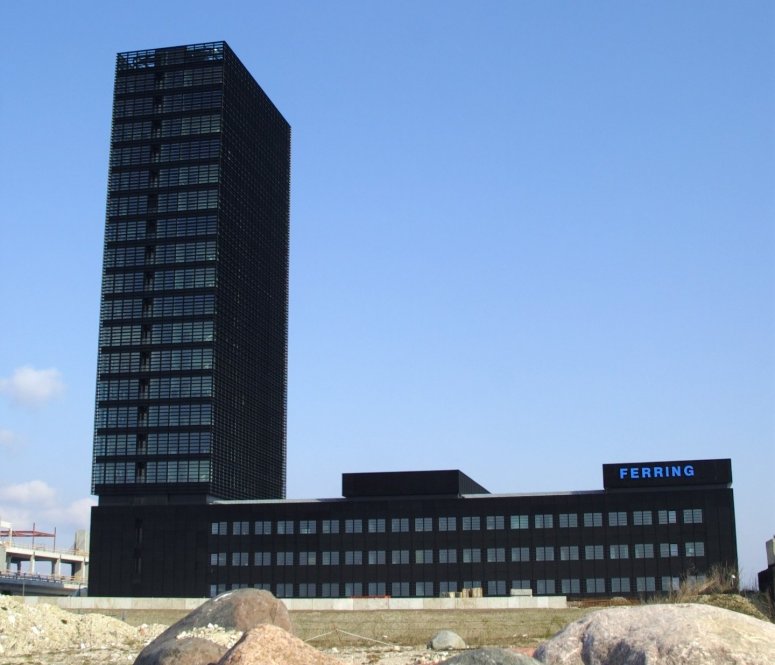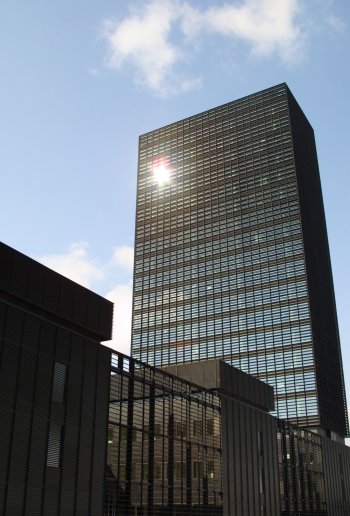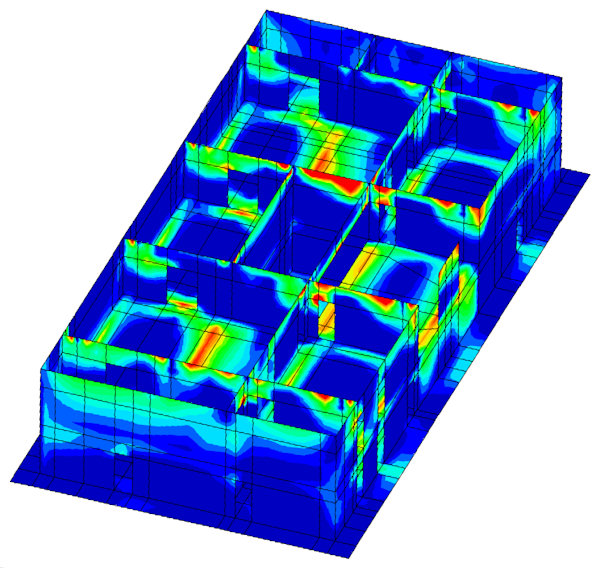 Case
Study Case
Study
Ferring
International Centre
- Design of multi-functional basement structure for 20 storey
office building
- Optimisation of wall thicknesses
- Verification of structural capacity for compliance with design
codes

Moe & Brødsgaard Consulting Engineers
were
responsible for the structural design and civil works of the Ferring International Centre
in Copenhagen, Denmark. LUSAS Civil & Structural analysis was used to verify
the structural capacity of a complex reinforced concrete basement structure for the office
and laboratory complex on behalf of the international pharmaceutical company, Ferring A/S.
|
Overview
The Ferring International
Centre comprises two buildings both built on a two storey reinforced concrete basement
sub-structure. A three storey low-level building houses research laboratories, and an 80m
tall, twenty storey tower provides office accommodation. Loads from the braced steel frame
of the tower are transferred via sixteen main columns and anchored into the concrete
basement using holding-down bolts. Maximum tensile and compressive reactions of 3,300 and
11,300 kN, respectively are accommodated.
The tower basement consists of cast in-situ reinforced concrete
walls of 350mm thickness externally and 500mm thickness internally. Precast concrete units
are also used. The basement houses technical installations, provides changing rooms for
the employees and also functions as a safety shelter. Because of this, the modelling is
complicated due to the large number of openings in the walls that are required to
accommodate the multi-functional use of the structure.
Modelling
Using LUSAS Civil &
Structural, Moe & Brødsgaard’s engineers created a 3D model of the basement
structure using thick shell elements to model the concrete walls and slabs. Tower loadings
due to dead and wind loads were applied and linear elastic forces and plots of stress
distribution in the basement were obtained. The results were used to verify the structural
capacity and compliance of the design with Danish codes of practice.
|

|

"By using LUSAS for the detailed analysis of the basement we
could obtain a realistic understanding of structural deformations and optimise the wall
thicknesses and the amount of reinforcement used."
Henrik Tinning, Moe & Brødsgaard
Find out more
Other LUSAS Civil & Structural
case studies:
|
|
Software Information
|